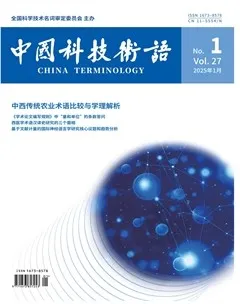高等教育中的航空器维修术语表开发:探索基于语料库的关键词分析方法路径
2025-01-10MalilaPRADODanielaTERENZIDiegoBRITO
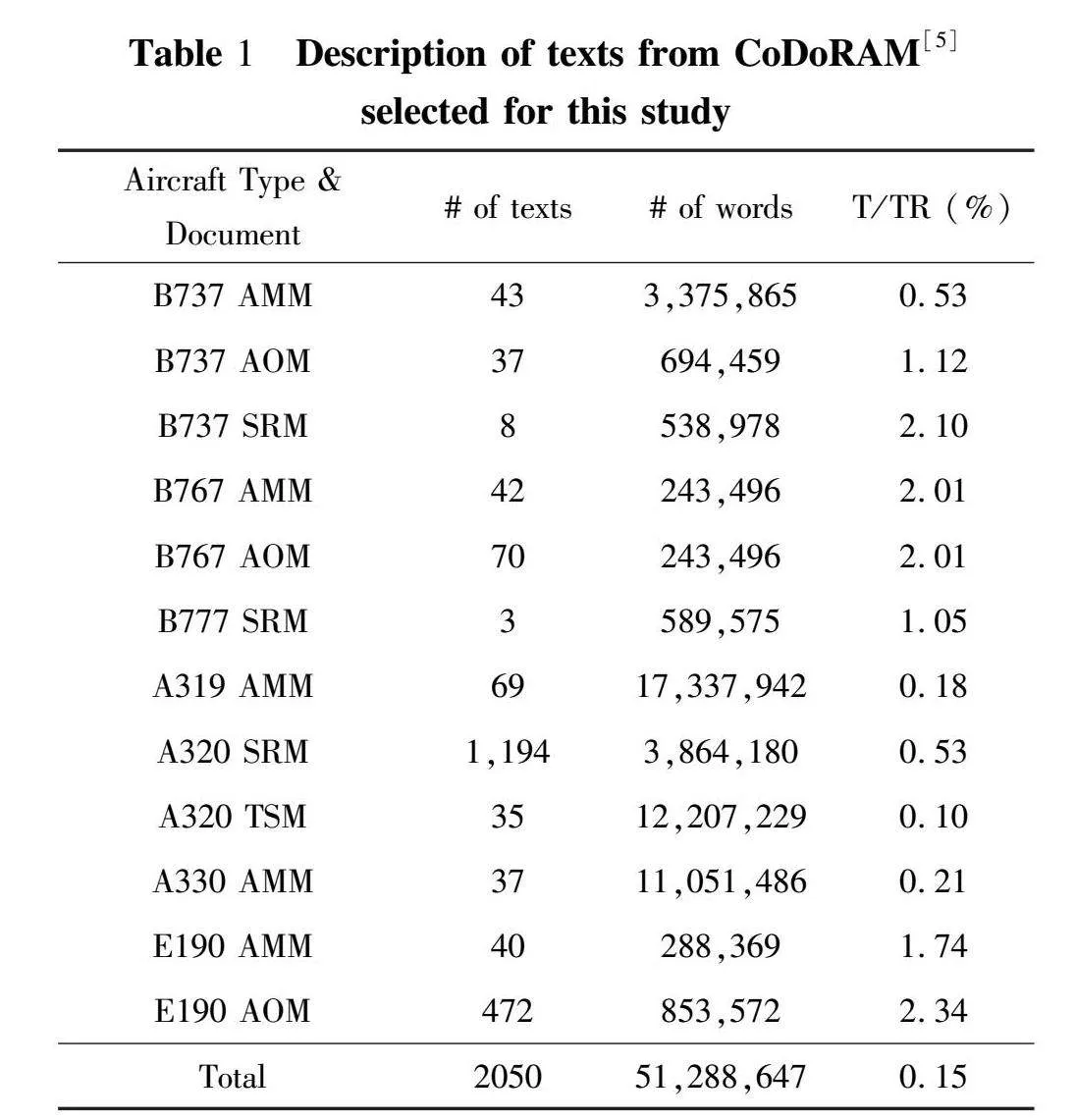
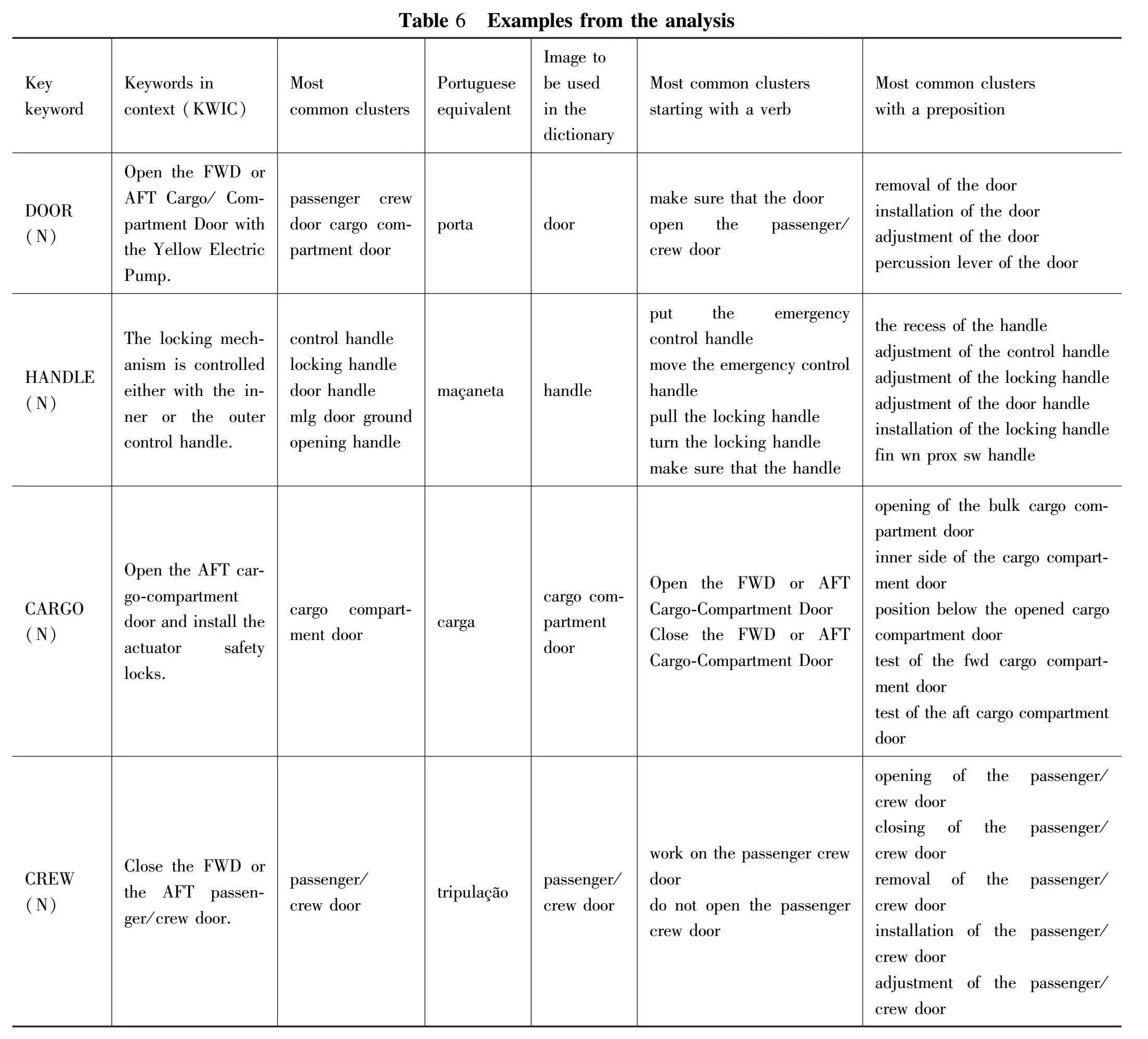
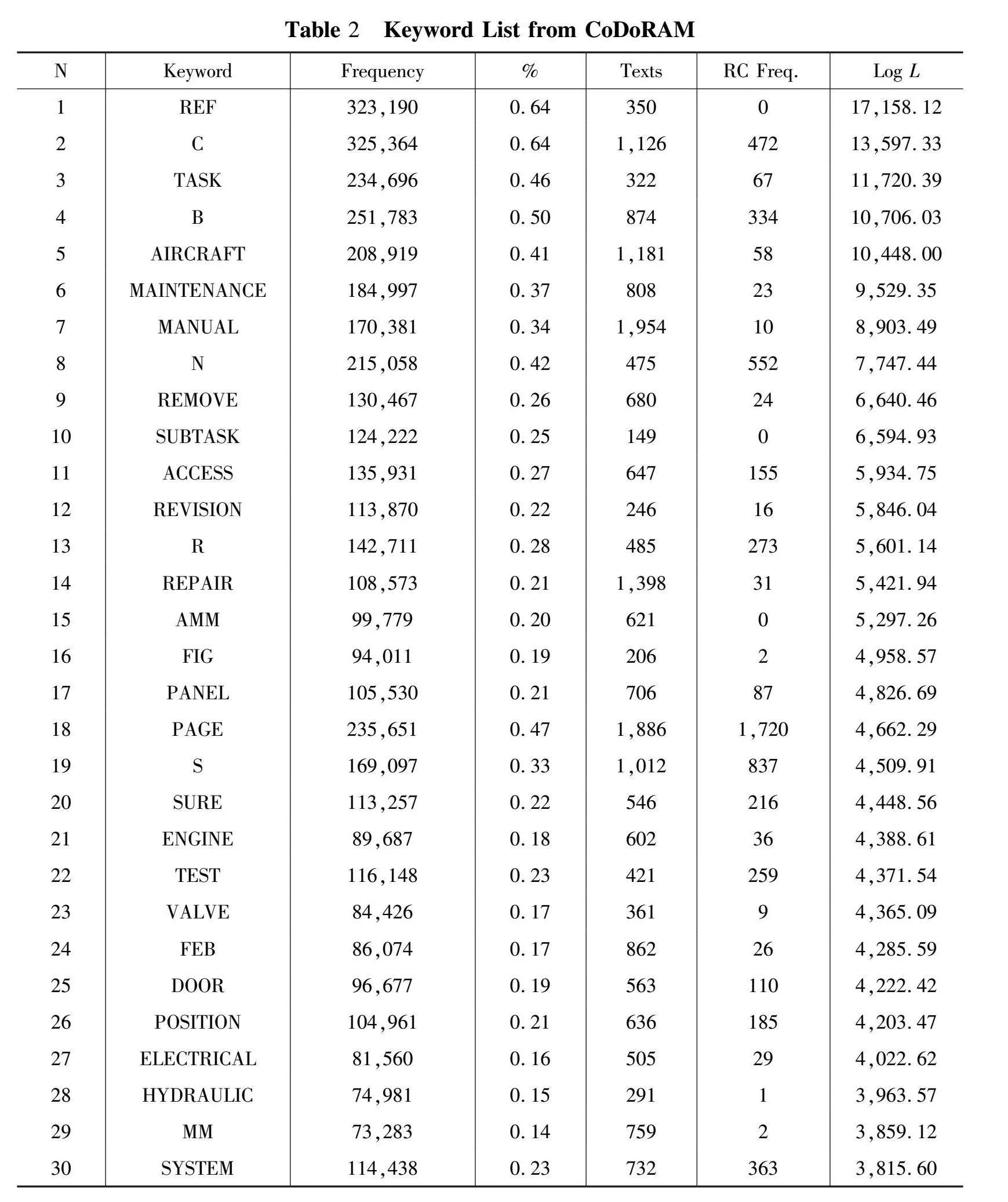
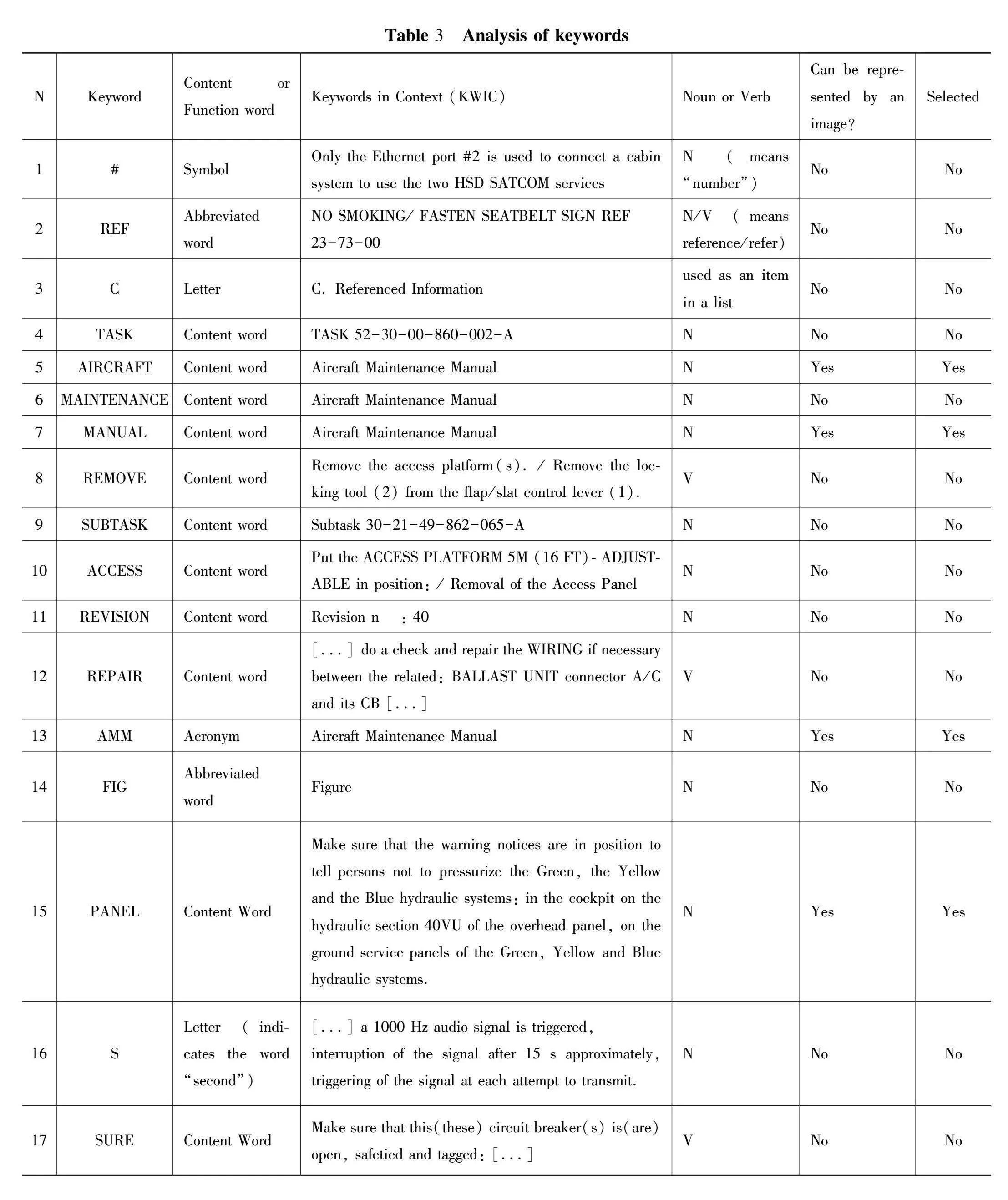
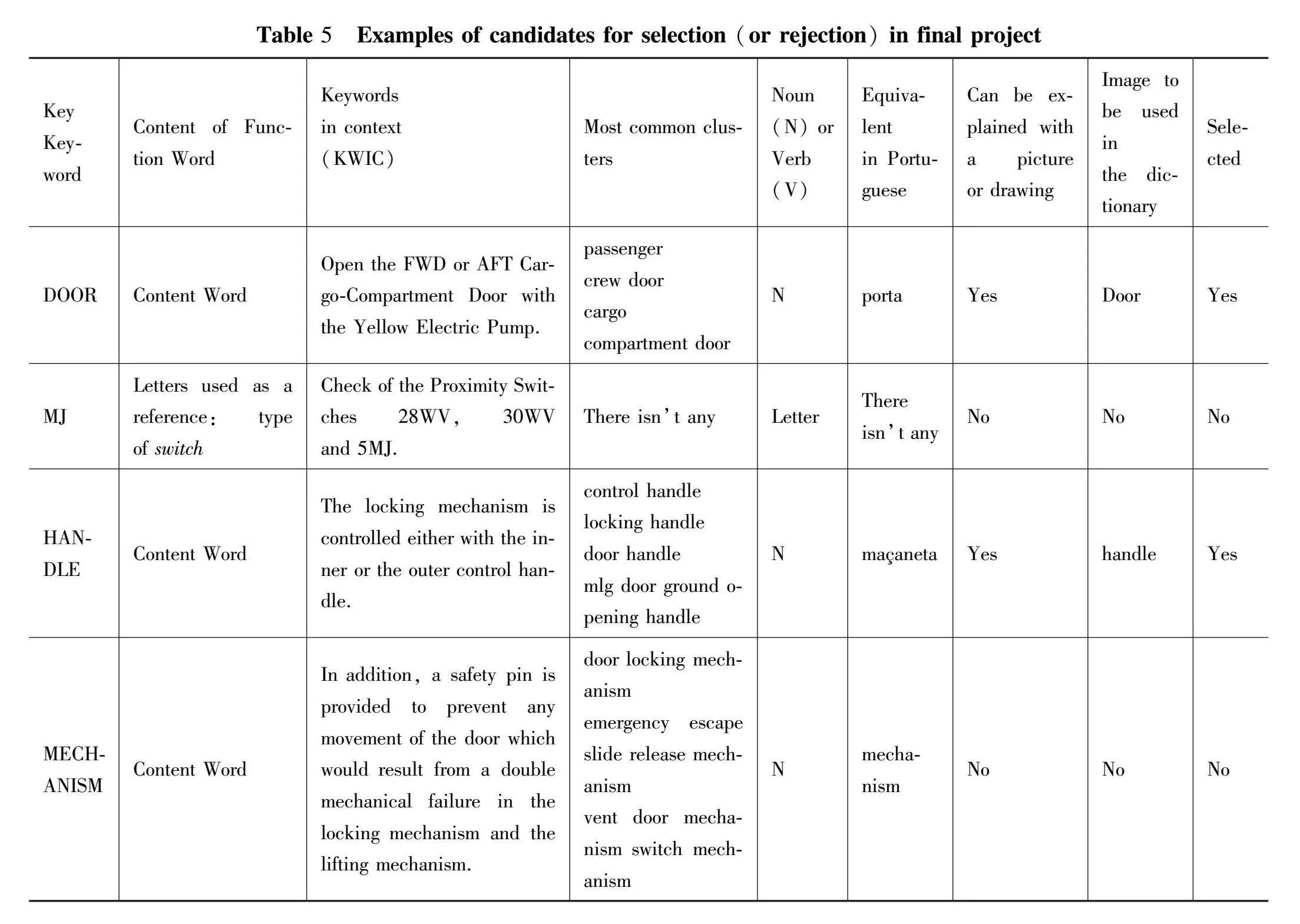
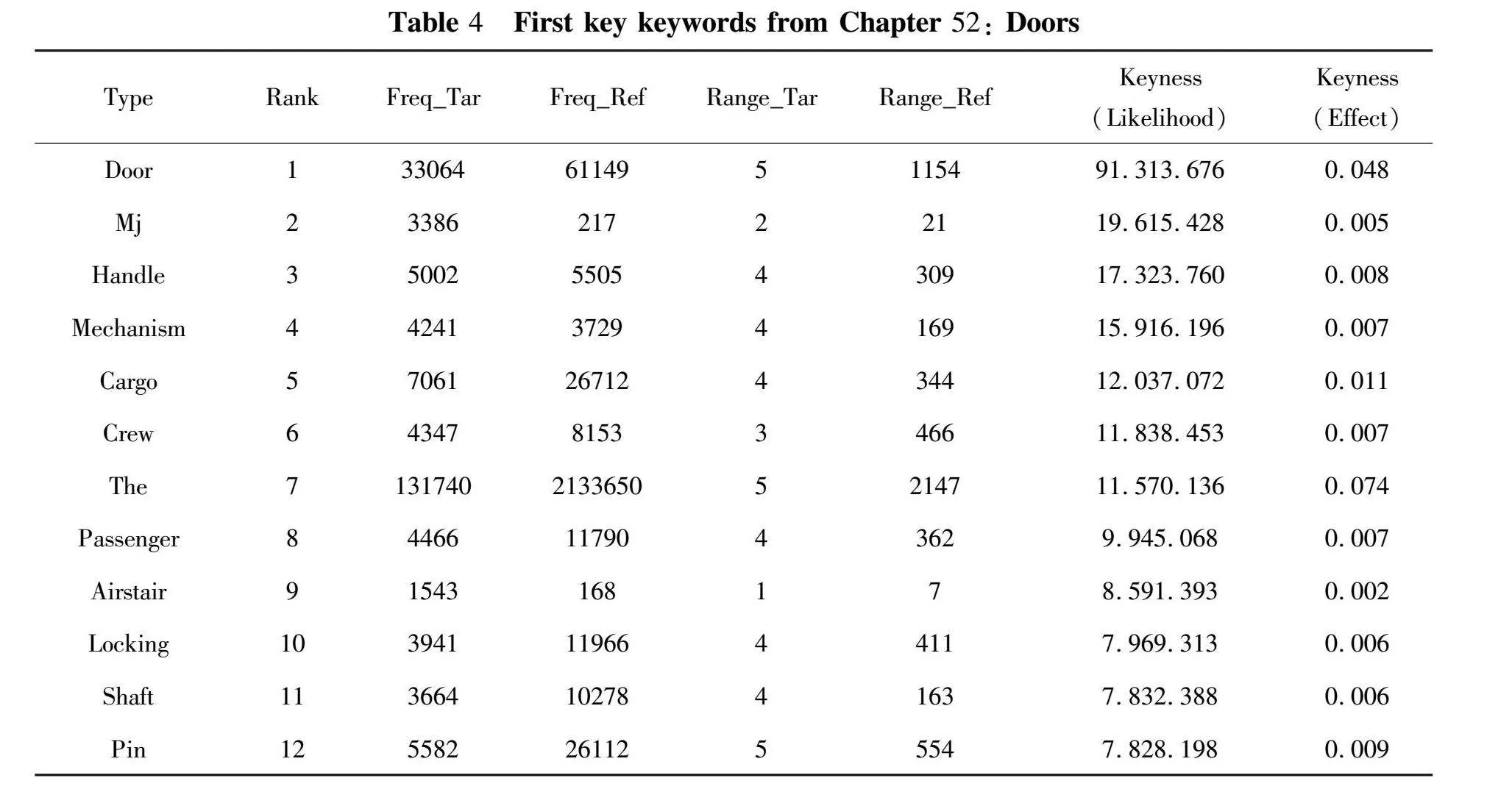
Development of Aircraft Maintenance Glossaries in Higher Education: Exploring Methodological Paths to Corpus-Driven Analysis of Key Keywords
Malila PRADO1, Daniela TERENZI2, Diego BRITO2
(1.BNU-HKBU United International College,Zhuhai 519087; 2. Federal Institute of Education, Science and Technology of S o Paulo, S o Carlos 13.565-820)
Abstract: This paper presents a project aimed at developing a trilingual visual dictionary for aircraft maintenance professionals and students. The project addresses the growing demand for accurate communication and technical terminology in the aviation industry, particularly in Brazil and China. The study employs a corpus-driven approach, analyzing a large corpus of aircraft maintenance manuals to extract key technical terms and their collocates. Using specialized subcorpora and a comparative analysis, this paper demonstrates challenges and solutions into the identification of high-frequency keywords and explores their contextual use in aviation documentation, emphasizing the need for clear and accurate technical communication. By incorporating these findings into a trilingual visual dictionary, the project aims to enhance the understanding and usage of aviation terminology.
Keywords: aircraft maintenance; corpus; keyword extraction
中图分类号:H083; V21" DOI:10.12339/j.issn.1673-8578.2025.01.014
摘 要:为了满足航空业对准确沟通和技术术语日益增长的需求(特别是在中国和巴西),该项目对面向航空器维修专业人员和学生开发的可视化词典项目进行了研究。该研究使用语料库技术分析了大量航空器维修手册,并提取了其中的关键术语和搭配用词。经由专业子语料库和比较分析手法,该文呈现了在甄别高频关键词方面的挑战与解决方案,探讨了它们在航空文件中的使用语境,同时强调了清晰度和准确性在技术沟通中的必要性。通过将上述研究成果纳入三语可视化词典,该项目旨在提升对航空术语的理解水平和应用效果。
关键词:航空器维修;语料库;关键词提取
收稿日期:2024-09-22" 修回日期:2024-12-06
Authors’ information: Malila PRADO, female. Ph.D in English language, corpus linguistics, aviation English, terminology, and ESP. Assistant professor in the Department of Languages and Cultures, BNU-HKBU United International College, Zhuhai, Guangdong. Email: malilaprado@uic.edu.cn. Daniela TERENZI,female. Ph.D in linguistics,ESP, DDL, corpus linguistics, aviation English. Associate professor in aircraft maintenance and aeronautical engineering programs, Federal Institute of Education, Science and Technology of S o Paulo, S o Paulo, Brazil. Email: daniela.terenzi@ifsp.edu.br.
0 Introduction
Aircraft maintenance is a critical domain within the aviation industry,requiring technicians to perform a wide array of tasks to ensure the airworthiness of aircraft.These tasks range from rigorous inspections to complex repairs of systems and powerplants (engines).Given the high stakes, accuracy and clarity of communication, particularly in the use of technical manuals, checklists, and other documentation, are paramount to aviation safety[1-5] English, the lingua franca of aviation,plays a central role in this process,particularly because this documentation is published and disclosed in English, though translations may be used in some countries[2].Even in settings where documents are translated into local languages, reliance on English among the aviation workforce presents challenges,especially because professionals must have adequate reading and writing skills if they are to interpret technical documentation and file reports accurately[1]. For example, aircraft logbooks must be written in English to facilitate understanding by ground personnel when the aircraft lands in a different country from its base or is sold to another company[6].
In aviation maintenance, effective communication is crucial, as highlighted by the “Dirty Dozen” framework developed by Dupont[7], which identifies twelve common factors that contribute to human errors, with poor communication identified as the most critical. This framework is widely used in training programs and accident analysis to mitigate the risk of human error. Chatzi et al. emphasized the significance of clear communication not only within individual teams but also between different teams as well as in accessing and interpreting aircraft maintenance documentation[8]. Their study underscores the connection between communication and trust, noting that it has the power to enhance employees’ trust levels. This highlights the role of organizational culture in fostering an environment where transparent communication is encouraged. In response, Chatzi et al. recommend continuous training that targets human error management, particularly focusing on improving written forms of communication such as documentation, manuals, and work cards, which are essential for maintaining safety and accuracy in maintenance operations[8]. Ensuring that communication standards are met in these written materials helps reduce misunderstandings and fosters a culture of reliability and accountability in aviation maintenance settings.
In light of these challenges, there is a growing need for resources that support both language learning and technical terminology in aircraft maintenance, particularly in institutions of learning that train future professionals for this market. This paper describes an ongoing project that addresses this need by designing a trilingual visual dictionary specifically for students of aircraft maintenance and aircraft engineering as well as in-service personnel, providing them with a tool for handling the technical language of aircraft parts such as “landing gear”," “powerplants” and “hydraulic systems,” among others. This project is currently connecting institutions in Brazil and China, with the potential to reach other countries.
1 Literature Review
The complexity and specificity of civil aviation terminology necessitate translators possessed of a sufficiently solid background in aviation to make informed translation choices[9]. Additionally, there is a need for standardized terminology databases to reduce variability and ensure consistency in translations across different documents and translators[10-11]; such a need demands from translators working with civil aviation terminology both language skills and technical knowledge of the field. This dual expertise allows them to handle the nuances of specialized terms and provide accurate and contextually appropriate translations[9]. In a case study conducted in China, Hua and Hu tackled this demand by means of a software package (SDL Multiterm) to manage aviation terminology taken from an aviation-related encyclopedia entitled Pilot’s Handbook of Aeronautical Knowledge, specializing on the extraction, translation, creation, and maintenance of a terminology database[11].
Liu (2020) and Bao (2020) list a number of challenges posed by the translation of terms from English into Chinese[9-10]. Among the many examples, Liu mentions how polylexical or multi-word units pose difficulty when translated into Chinese because Chinese is “a non-inflectional language while English is an inflectional one”, resulting in inherently problematic systemic differences[10]. Bao refers to the ambiguity of some context-specific terms such as hold and pattern, which, when combined into holding pattern, acquire a different meaning in that it refers specifically to a flight pattern used by aircraft waiting for landing clearance[9]. These examples illustrate the importance of multi-word units, which are ubiquitous in aircraft documentation in general, be it manuals, checklists or logbooks.
These challenges apply equally to the teaching of English for aviation professionals. Using authentic examples, Bocorny investigated noun phrases[12] while Sarmento examined modal verbs found in aviation manuals through corpus linguistics with a view to contributing to the teaching of manual reading by pilots and aircraft maintenance personnel[13]. Because modal verbs in aircraft manuals have different semantic prosody and subtleties that do not correspond to their use in general English, they need specific attention and cannot be studied in isolation. In fact, even textbooks designed specifically for aviation maintenance personnel, such as Shawcross’s English for Aircraft[14], though extremely helpful in that it presents correct features (mainly regarding the lexicon), may not reflect the particular context in which such features are used[13]. In a similar vein, Bocorny compared the use of noun phrases in aircraft manuals and Shawcross’s textbook and noted that work needs to extend from noun phrases and touches on prepositions, conjunctions, and verbs so that students can understand the boundaries of noun phrases[12]. This in turn helps students identify noun phrases so that, contrary to the word order familiar to Portuguese speakers, they can transpose the head noun at the end of the phrase to nouns or adjectives in forward positions.
Terenzi and Terenzi and Pizzi contributed to this body of research by examining the translation of specific vocabulary from English into Brazilian Portuguese, which is essential to ensuring that technical terms are accurately conveyed across languages[5,15]. Terenzi (in press) also addresses how she deals with easily confused words among Brazilian students by having them explore data through collocates[16]. In Brazil, the teaching of English for Specific Purposes (ESP) has long been employed in technical courses, particularly in fields such as aviation, in which English proficiency directly impacts safety and job performance[17-18]. Such initiatives have focused primarily on developing reading skills, with some attention given to writing, as these assist in interpreting technical manuals and documentation that are predominantly in English among the airlines based in the country.
Chinese aviation professionals, particularly maintenance personnel, often rely on translated materials to perform their duties as the learning curve for mastering technical English is steep[10]. As in Brazil, growing investment in aviation English training has focused majorly on pilots and air traffic controllers so as to meet the ICAO’s Language Proficiency Requirements[19]. Yet maintenance technicians also face challenges. Although the translation of technical manuals is a manageable and common practice, thus allowing professionals to engage with the necessary documentation in a language that is more accessible to them, reliance on translation introduces risks as translation errors can lead to misinterpretations, with potentially serious consequences. In response, studies such as those by Liu (2020), Bao (2020), and Hua and Hu (2024) call for more research into specialized language training that can bridge the gap between English and Chinese in the context of aviation[9-11].
Global initiatives have focused on simplifying the language used in technical manuals so as to reduce errors in aviation maintenance. A prominent example is the ASD-STE100 standard last updated in 2021 by the AeroSpace and Defense Industries Association of Europe (ASD). This standard was created by a dedicated working group aiming to provide technical writers with guidelines that promote clarity, precision, and objectivity in technical documentation. ASD-STE100 includes comprehensive recommendations that address both lexical and structural aspects of language use. For instance, it suggests clear lexical choices, such as defining the verb fall specifically as to move down by the force of gravity to avoid confusion with other meanings, such as decrease. Structurally, the guidelines emphasize using the active voice in procedural writing and as much as possible in descriptive writing in order to minimize ambiguity. Supporting this approach, Sarmento found that especially when combined with modal verbs, the passive voice is used infrequently in aircraft maintenance manuals, accounting for only 16.32% of content, which aligns with the ASD’s objective of promoting direct and clear communication[13].
These standards are continually refined to incorporate the latest research findings on effective technical writing. Additionally, various workgroups around the world are extending the initiative by translating ASD-STE100 into multiple languages, thereby making these simplified guidelines accessible to a broader audience of maintenance professionals who operate in non-English-speaking environments such as those studied and reported here. This global effort not only enhances comprehension but also supports consistency and safety across different linguistic and cultural contexts, ensuring that maintenance personnel worldwide can apply the same high standards of clarity and precision in their work[17].
By addressing these linguistic and educational challenges through the development of a multilingual visual dictionary, this project aims to support the ongoing professional development of aircraft maintenance technicians and technical translators in both Brazil and China. The dictionary aims to serve as a practical tool to enhance understanding of technical terminology, thereby improving the safety and efficiency of maintenance operations in a global context.
2 "Method
Corpus linguistics serves as a research approach “to the study of languages, discourse structures, patterns, and usage”[20]. It employs computational tools that help researchers extract data from corpora, which are banks of texts in a certain (or several) registers or genres collected from naturally occurring settings. Studies utilizing corpus linguistics are often multidisciplinary, with applications to lexicography, terminology, translation, language teaching, and pedagogical material design, among others.
The objective of the present study is to investigate words and their collocates with a view to building a trilingual dictionary for both terminological and teaching purposes. In particular, we need a corpus of aircraft maintenance manuals that will enable us to extract the words we need to perform specific tasks in that field. To this end, we adopt a corpus-driven approach[21-22], including tools that extract data such as keyword lists and collocate lists statistically. In addition, we examine the quantitative findings manually, that is, we further investigate the data quantitatively through concordance lines or the cotext.
The following subsection documents the corpus along with the reference corpus used, with extraction methods, namely keywords, key keywords, and collocations, detailed in the next subsection.
2.1 The Corpus
The target corpus consists of aircraft maintenance technical publications such as manuals, reports, and directives. Named the CoDoRAM, or Corpus of Documents Related to Aviation Maintenance[5], it currently consists of 51,288,647 words, a high number explained in part by the fact that because manuals refer to each part of an aircraft, publications such as aircraft manuals contain more words than reports. Table 1 lists the maintenance documents included in CoDoRAM, with Aircraft Maintenance Manuals (AMM), Aircraft Operating Manual (AOM), Structure Repair Manuals (SRM), and Task Cards along with aircraft type and number of texts (chapters) in each, which were selected for the present study.
We also calculated the type/token ratio (T/TR) in each subcorpus to further demonstrate lexical density. This ratio is computed by dividing types (number of unique words) and tokens (total number of words) in a corpus. The higher the value, the more complex the lexicon in the corpus because it contains a greater variety of words. This corpus has a total T/TR of 0.15%, demonstrating a high rate of repetition. Finally, reference to “texts” in our corpus includes chapters, which tend to focus on key parts or systems of the aircraft (landing gear, hydraulics, etc.). An extension of this corpus, which includes manuals of a greater variety of aircraft types as well as Portuguese and Chinese translations can be found in Prado et al.[6]
The selection of aircraft manuals for this corpus was made to meet our specific needs in Brazil taken from aircraft that currently compose the fleet of airlines based in Brazil. We also investigated the Chinese market and found that Chinese airlines fly a wider variety of models, including their own manufactures (COMAC).
The reference corpus we initially employed was compiled by a team of researchers working on the Corpus Multilíngue para Ensino e Tradu o (CoMET) based at the University of S o Paulo (USP), Brazil. The corpus consists of 1,766 texts taken from eight different newspapers and magazines published in the United States and one in the UK. It contains 1,362,289 words, with a T/TR of 3.49%. The newspapers are: The Financial Times, The Los Angeles Times, Newsweek, The Guardian, The New York Times, The Times, Time Magazine, USA Today, and The Washington Post. Nevertheless, our investigations of keywords led us to make other choices, which will be further explored in the next subsection.
2.2 Keywords and Key Keywords
According to Scott “a key word may be defined as a word which occurs with unusual frequency in a given text”[23]. However, its importance does not depend on high frequency alone but rather on its significant presence in that corpus. The reference corpus must present different features from the target corpus such that it will help filter those differences. To illustrate, if the objective of the research is to investigate the technical terms of a certain field, a corpus of that field must be contrasted with, for example, a corpus of newspaper articles as this will reveal those terms that are more common in the technical field than in the more generalized topics of newspapers[24]. This sorting requires a number of statistical formulas that are embedded in software packages such as those used in this study: Wordsmith Tools[25] and Antconc[26]. In our case, we used the log-likelihood ratio selected in both tools.
However, as pointed out in Rebechi and Tagnin, the appropriateness of a reference corpus depends on the research question[27]. As seen above, though our target corpus is very large, it is not lexically rich, as attested by our measures of T/TR. Yet the very size of the corpus posed the first problem with generating keyword lists, namely meeting the criterion of broadly larger size (some argue four times larger) of the reference corpus. Yet, even though the reference corpus we used was a quarter of the size of the target corpus, our initial keyword lists did reveal terms related to aircraft manuals, as can be seen in the next section of this paper. This is probably due to the high frequency of technical words, which were much more frequent in the target corpus than in the reference corpus, confirming the importance of frequency in the statistical measures of keyness[24].
Nevertheless, there was a need for a more precise selection of words, which Scott defines as “words found to be key in the same texts as a given key keyword”[23]238. To achieve this, we followed the path as described in Rebechi and Tagnin, who contrasted a corpus of home cooking recipes with their target corpus of Brazilian recipes[27]. By doing so, the authors managed to extract information specific to Brazilian cuisine, the focus of their study. In our study, part of the team conducted the linguistic extraction of keywords, and the other part was in charge of selecting key keywords through the use of collocation, which we will now explain.
2.3 Collocation
A collocation is a string of two or more words that commonly appear together. These combinations of words help language become more naturalistic or fluent and should be prioritized in language teaching[28]. Wray lists over 50 common terms to describe the phenomenon, including clusters, lexical bundles, phraseology, and N-grams, among others[29]. The search for collocations was especially important in our study because: (1) it assisted us in finding key keywords; (2) it will be one of the elements present in our visual dictionary; and (3) it will help us identify equivalent terms in the other two languages we plan to investigate, namely Portuguese and Chinese.
We used the Collocates tool in both Wordsmith Tools and Antconc to analyze the behavior of the selected keywords in order to verify if they were suitable candidates for our dictionary. To further examine the selected words, we used a range of five, that is five words to the right or to the left. Examples of how we guided our decisions include the three types of clusters below:
(i) Nouns or noun phrases, which normally refer to equipment or aircraft part names;
(ii) Verbs, indicating instructions regarding the equipment or part;
(iii) Prepositions or prepositional phrases combined with the noun phrases (usually “of the”)
We now turn to a description of the initial work and the challenges we faced as well as the changes we opted to make throughout the process. As a case in point, we will use one specific aircraft part: door, as this is one of the top content words and it has a chapter entirely dedicated to it.
2.4 Term Extraction
Although the target corpus is considerably larger than the reference corpus, its T/TR is 0.15%, indicating that its component texts are highly repetitive. As stated in the previous section, we began our analysis by comparing the target corpus with a reference corpus of newspaper articles of a much smaller size. We extracted a list of keywords representative of the aviation field, as seen in Table 2.
Table 2 presents information in the following order.
- N, or number, stands for the order of the keyword based on frequency or another criterion.
- Keyword is the actual keyword, the item being analyzed.
- Frequency is the number of times the keyword appears in the corpus.
- % is the percentage of the keywords frequency compared to the total number of words in the corpus.
- Texts regard the number of different texts in which the keyword appears.
- RC Freq, or Reference Corpus Frequency, is the frequency of the keyword in a reference corpus, used for comparison.
- Log_L, or Log Likelihood, is a measure of how much more likely the keyword is in the target corpus compared to the reference corpus.
The very first challenge involved in analyzing such a corpus was its size. Corpus tools usually have a minimum number of words to be processed, while paid tools allow for more data. Additionally, it takes a long time for the tool to process the term extraction, and the number of terms makes a further investigation of concordance lines particularly time-consuming.
As our main purpose in analyzing keywords was to select vocabulary for a visual dictionary, we opted to first select content words (such as nouns, verbs, etc.) as the most suitable candidates[21]. However, given that we plan to employ images of aircraft parts in the visual dictionary, we opted for nouns, principally because this allowed us to further investigate their collocates. Bennett defines collocation as the statistical tendency of words to co-occur[28]. Based on previous studies of multi-word units[10,12] as well as semantic prosody based on surrounding words[13], our hypothesis was that nouns would help us retrieve collocates that would then assist in the analysis of the lexical profile or behavior of each term. We then used concordance lines to determine whether certain words were nouns or verbs, such as “to control” and “the control.” While conducting this analysis, we noticed that some nouns would be difficult to represent with an image because they describe actions or stand for abstract concepts, which reinforced our initial selection of nouns.
Having made these choices, we faced another challenge, which we present below through a review of the first 21 keywords (Table 3).
Table 3 shows the study of the keywords carried out by an aviation specialist in training with no background in linguistics. He answered questions about the behavioral profile of each keyword, considering not only the cotext of the word, that is, sentences, phrases, or texts in which the keywords may be found, but also if those words might be good candidates for the visual dictionary. Table 3 shows that the words selected initially indicated the “aboutness”[30] of the target corpus, i.e., aviation maintenance and revealed features related to this particular type of document, including the use of instruction verbs (remove, repair, make sure). However, these keywords are not among those that tend to cause difficulty among aircraft maintenance students and professionals and, although they are important words for a dictionary, their meaning can be easily looked up in regular language resources.
Based on this conclusion, we opted to follow Rebechi and Tagnin (2021)’s suggestion[27] in contrasting a specialized corpus against an even more specialized case. Thus we divided our target corpus, i.e., part of CoDoRAM[5], into various smaller but specific subcorpora for an analysis of key keywords. However, since aircraft maintenance manuals (AMM) are already divided into chapters, the corpus was processed in a different way. As stated earlier, the chapters found in aviation documents related to commercial aircraft present explanations and steps for maintenance procedures related to specific parts of the aircraft. This organization is known as ATA100, which refers to the numerical system established by the Air Transport Association in the United States in 1956. Aircraft manufacturers use this system in order to keep documents standardized, and examples from this organization include chapters on Electrical Power (Chapter 24), Fuel (Chapter 28), and Lights (Chapter 33).
Considering this organization of the manuals and the specificity of the vocabulary used to refer to aircraft components as well as the results obtained based on the initial corpus analysis performed for this study, we decided to use only AMMs as the reference corpus and one of the chapters of the same document (a subcorpus) as our target corpus (i.e., Chapter 52-Doors) in order to obtain a list of key keywords.
While the reference corpus consisted of all chapters, Chapter 52 (Doors) of the AMMs covers multiple aircraft types, including A319, A330, B737, B767, and Emb190/195. The target corpus therefore became Chapter 52 (Doors) from each of the abovementioned manuals, with a total of five texts. The reference corpus thus consisted of 2,167 files, 28,127,802 tokens, and 53,816 types, with the target corpus consisting of five files, 1,279,709 tokens, and 8,742 types. Part of the results of this analysis can be seen in Table 4, which also shows that words such as handle, locking, and shaft not only show the subject of the corpus but are also more specialized than those ones found in the initial analysis.
Given these results and the organization of documents according to ATA100, we may say that a specialized dictionary specifically assembled for this context, such as the one we are to develop as the outcome of this research, can also be thematic; that is, it can be divided in a similar way to the division of the content proposed in ATA100. Furthermore, other aspects were considered when reaching this conclusion, including the fact that professionals tend to specialize in specific areas. For example, according to the Brazilian National Civil Aviation Agency[31], there are three qualifications for aeronautical maintenance mechanics: Airframe, Powerplant, and Avionics. Since these professionals have different needs given the vocabulary used in the documents they use, specific airlines, Maintenance, Repair, and Overhaul (MRO) type, these documents are divided into sectors related to different aircraft components and systems such as seats, powerplants, and landing gear.
Since such words are candidates to be included in the visual dictionary, a new analysis of key keywords was performed. The criterion used for this analysis was the same as that presented in the previous analysis, that is, selecting only nouns whose meaning can be represented by a picture or drawing. Furthermore, other aspects were analyzed through their collocates. To date, the first 100 key keywords have been analyzed, and a few examples of the ongoing analysis are presented in Table 5, including in the rightmost column, whether the word has been selected as a term to be inserted into the visual dictionary.
Some interesting aspects can be highlighted, including terms whose only function is that of adnominal adjunct in this context, such as cargo in cargo compartment door and crew in crew door, while others do not appear in isolation, that is, they are always part of a nominal group such as mechanism in door locking mechanism, emergency escape slide release mechanism, or slide on escape slide.
Furthermore, after analyzing the concordance lines and searching for equivalent terms in Portuguese, difficulty finding translations or explanations for specific technical terms was noted, as previously mentioned in other studies, including Terenzi and Pantoja[32]. That is the case of the word girt, as in “Adjustment of the Girt Bar and Load on the Inner Control Handle of the FWD Passenger/Crew Door,” and target, as in “The sensor is installed in the door sill area near FR25 and the target is attached on the target lever (part of the switch mechanism).”
This approach to processing the target corpus (i.e., chapters of different manuals related to doors) and the reference corpus (all chapters in the manuals, except those related to doors) was essential to identifying specific vocabulary. This makes clear the dearth of studies that might help us better extract technical terms related to each of the chapters in the AMMs.
As planned, based on the key keyword analysis, we investigated the most common clusters related to the selected terms. To date, the most common clusters have been analyzed for the first 30 selected words (out of a total of 56 selected words, though some will be discarded as they are singular and plural forms of the same word). Examples taken from the analysis are shown in Table 6. Based on the analyses of the first words, clusters were separated into two types, starting with verbs or formed with a preposition.
Some clusters are common to all selected keywords, especially those with a preposition. Some examples are: Removal of the (...), Installation of the (...), Adjustment of the (...), Test of the (... ), and Visual inspection of the (...). Among those starting with verbs, the most common are: Make sure that the (...), Open the (...), Close the (...), Move the (...), Adjust the (.. .), Install the (...) and Remove the (...). While these clusters are common for most of the keywords, there are specific clusters that appear only with one word, such as “Tighten the nut”, “Torque the nut” and “Loosen the nut,” since in this context, it is only possible to tighten, torque, or loosen a nut.
The analysis of the clusters will be completed in the next stage of the study, and the results will be considered for the development of the macro and micro-structures to be included in a visual dictionary in which keywords (in English), their respective equivalents in Portuguese, and the most common clusters will be available.
3 Concluding remarks
This study highlights the relationship between language and technical accuracy in the aviation maintenance industry for future professionals, including aircraft maintenance personnel and technical translators. The analysis undertaken in this research follows a corpus-driven approach[21-22], beginning with the extraction of keywords from a large corpus of aircraft maintenance manuals. This initial extraction revealed terms frequently encountered in the aviation maintenance field but also highlighted the repetitive nature of technical language. To refine the selection, the study employed a comparative analysis using specialized subcorpora[27], focusing on specific chapters of the manuals, exemplified here with those dealing with aircraft doors. This allowed for the identification of more specialized terms—referred to as “key keywords”[23-24]—that are particularly relevant to maintenance professionals.
Further refinement is being conducted through collocation analysis[9,21-22], which helps in identifying the contextual use of these terms as well as their most common collocates. This step assists in ensuring that the terms selected for the visual dictionary are not only accurate but also contextually appropriate, thus enhancing their terminological and pedagogical value for students or professionals in the aviation industry.
The development of multilingual resources such as the visual dictionary we aim to build addresses the need for effective communication in aircraft maintenance, a field where miscommunication can have dire consequences. By incorporating standardized terminologies and controlled language such as Simplified English into the field, aviation professionals can better navigate technical documentation, reducing errors and improving safety. We hope to contribute tailored linguistic tools to aviation and suggest that future studies should continue to explore the intersection of language, technology, and safety in global aviation contexts.
Acknowledgement
This research was funded by the Funda o de Amparo à Pesquisa do Estado de S o Paulo (FAPESP), Grant No. 2023/03246-2.
References
[1] DRURY C G, MA J. Do language barriers result in aviation maintenance errors? [C]//Proceedings of the Human Factors and Ergonomics Society 47th Annual Meeting. 2003.
[2] MA J, DRURY C" G, MARIN C V. Language Errors in Aviation Maintenance: Quantifying the Issues and Interventions in Four World Regions [J]. International Journal of Aviation Psychology. 2009, 20(1): 25-47.
[3] MATHEWS E. How Incomplete Language Standards Threaten Aviation [N/OL]. Aviation Week. (2020-03-03). https://aviationweek.com/air-transport/opinion-how-incomplete-language-standards-threaten-aviation?fbclid=IwAR262pq8-6McH6YkH7_1PvpsXOAHI0cogGfANrsd7TbU0N4pufWxqeDPSZI.
[4] MATHEWS E, CARSON J, SINGLETON S, et al. Investigating Language Factors in Aviation Accidents [J]. Aviation Psychology and Applied Human Factors. 2022, 12(2): 99-108.
[5] TERENZI D. Overcoming challenges in English for aviation maintenance: Technical publications selection for the construction of a corpus and its use to teach language aspects considering learners’ needs [J]. Open Journal of Applied Sciences, 2021, 11(10): 1122-1134.
[6] PRADO M, TERENZI D, TOSQUI-LUCKS P. Language of aircraft documentation: Using a multilingual corpus in collaborative work in lexicography and pedagogy [J]. Journal of Teaching English for Specific and Academic Purposes, 2023, 11(1): 41-56.
[7] DUPONT G. The Dirty Dozen errors in maintenance [C]//Proceedings of the 11th Symposium on Human Factors in Maintenance and Inspection: Human Error in Aviation Maintenance. 1997, March 12.
[8] CHATZI A V, MARTIN W, BATES P, et al. The Unexplored Link between Communication and Trust in Aviation Maintenance Practice [J]. Aerospace, 2019, 6(6): 66.
[9] BAO Q. Characteristics and translation strategy of civil aviation terminology [J]. China Terminology, 2020, 22(6): 37-41.
[10] LIU H. The interplay between terminology and translation: Taking terminology translation in the field of civil aviation from English into Chinese as an example. Terminologia e Traduzione: Publifarum, 2020, 33.
[11] HUA D, HU N. Aviation technology terminology management based on SDL Multiterm [J]. China Terminology, 2024, 26(2): 43-48.
[12] BOCORNY A. Descri o das unidades especializadas policiais nominais no mbito da avia o: Subsídios para o ensino de inglês para fins específicos [J]. Universidade Federal do Rio Grande do Sul, 2008. http://hdl.handle.net/10183/15548.
[13] SARMENTO S. O uso dos verbos modais em manuais de avia o em inglês: Um estudo baseado em corpus [J]. Universidade Federal do Rio Grande do Sul, 2008.
[14] SHAWCROSS P. English for Aircraft: Documentation Handbook [M]. Belin Education, 1992.
[15] TERENZI D, PIZZI M C B. The relevance of linguistic and professional knowledge as contributing factors for technical translation in the area of aircraft maintenance[J]. The Especialist, 2020, 41(3): 00-00. https://doi.org/10.23925/2318-7115.2020v41i3a9.
[16] TERENZI D. (in press). Data-driven learning: The use of corpora beyond concordance lines in the teaching of English for aviation maintenance [M]//Friginal E, Prado M, Roberts J. (Eds.). Teaching and Assessment in Global Aviation English. Bloomsbury.
[17] PRADO M. Exploring an Aviation English Corpus to Equip Professionals with Pedagogic and Lexicographic Skills [C]//Proceedings of the 10th GEIA Seminar. 2024: 122-139. https://commons.erau.edu/geia-seminar/2023/proceedings.
[18] TERENZI D. Inglês para propósitos ocupacionais: Caminhos e desafios do professor em cursos técnicos e tecnológicos (English for Ocupational Purposes: Paths and challenges of teachers of technical courses) [M]//Monzon A, Fadanelli S. (Eds.). Ensino de línguas e forma o profissional (The teaching of languages and professional development). Letraria, 2019: 48-72.
[19] International Civil Aviation Administration (ICAO). Manual on the Implementation of ICAO Language Proficiency Requirements Second Edition: Doc 9835 [M]. Montreal, 2010.
[20] FRIGINAL E. The case of task-oriented, polite discourse in intercultural aviation and customer service interactions [J]. Journal of Corpora and Discourse Studies, 2024(7): 258-281.
[21] TAGNIN S E O. Corpus-driven terminology in Brazil [J]. Cahiers de Lexicologie, 2012, 2(101): 169-182.
[22] TAGNIN S E O. Corpus-driven glossaries in translator training courses [J]. Oslo Studies in Language, 2015, 7(1): 00-00. https://doi.org/10.5617/osla.1447.
[23] SCOTT M. PC analysis of key words and key key words [J]. System, 1997, 25(2): 233-245.
[24] GRIES S T. A new approach to (key) keywords analysis: Using frequency and now also dispersion [J]. Research in Corpus Linguistics, 2021, 9(2): 1-33.
[25] SCOTT M. Wordsmith Tools (Version 7) [M]. Stroud: Lexical Analysis Software, 2016.
[26] ANTHONY L. Antconc (Version 4.2.0) [CP]. Tokyo: Waseda University, 2022.
[27] REBECHI R, TAGNIN S. Brazilian cultural markers in translation: A model for a corpus-based dictionary [J]. Research in Corpus Linguistics, 2020(8): 65-85.
[28] BENNETT G. Using Corpora in the Language Learning Classroom: Corpus Linguistics for Teachers [M]. MI: University of Michigan Press, 2010. https://doi.org/10.3998/mpub.371534.
[29] WRAY A. Formulaic language and the lexicon [M]. Cambridge University Press, 2005.
[30] SCOTT M, TRIBBLE C. Textual Patterns: Key words and corpus analysis in language education (Vol. 22) [M]. Amsterdam: John Benjamins Publishing Company, 2006: viii. https://doi.org/10.1075/scl.22.
[31] ANAC (Agência Nacional de Avia o Civil). Regulamento brasileiro da avia o civil RBAC n 65 EMENDA n 00 [Z]. Brazilian Civil Aviation Regulation, 2018. https://www.anac.gov.br/assuntos/legislacao/legislacao-1/rbha-e-rbac/rbac/rbac-65/@@display-file/arquivo_norma/RBAC65EMD00.pdf.
[32] TERENZI D, PANTOJA M T B. A busca pela tradu o de termos técnicos da área de manuten o de aeronaves: Um estudo exploratório. 2018. https://api.semanticscholar.org/CorpusID:165188919.
